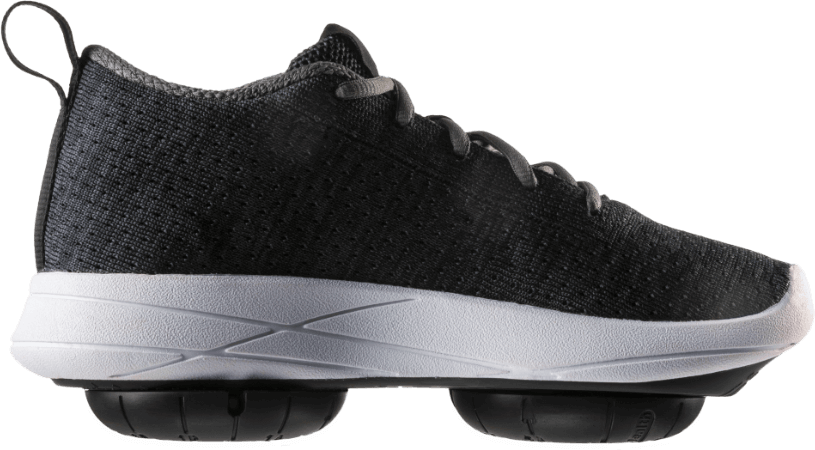All too many people who suffer from knee pain find themselves trapped in a vicious cycle of being unable to exercise due to knee pain, which can lead to weight gain that inevitably leads to even more knee pain.
Knee pain can begin slowly, as a small amount of discomfort and bearable pain while exercising or walking. But as the pain begins to increase, it may cause people to cut down on their regular workouts and walking schedules while they wait for the troublesome joint to recover.
However, with chronic knee pain, recovery doesn’t really happen all by itself. The knee pain might decrease while resting, but, if not managed properly, it often returns. Chronic knee pain rarely goes away on its own.
Lower Mobility and Weight Gain
Meanwhile, the lack of exercise can begin to take an effect. Up until recently, you were active and busy, working out regularly, walking everywhere, or running long distances, but now you’ve suddenly stopped, or decreased, exercising. This change makes weight gain more likely.
And the pounds can pile up quite quickly when one hasn’t had the time to adjust their diet to match the fact that they’re burning fewer calories than they were just recently beforehand.
Weight Gain Can Speed Up Knee Pain
The more weight you gain, the more pressure is placed on your knee joint, increasing the pain whenever you walk, go up or down stairs, or rise up from your chair. A number of scientific studies have found that obesity is a significant risk factor for developing osteoarthritis, which is the most common cause of knee pain.
What’s more, it’s not just obesity that’s the issue. Your risk of knee osteoarthritis rises by 35% with a 5 kg/m2 increase in BMI (body mass index). It’s crucial to lose weight and keep it off, but your troublesome knee makes it too painful to keep up the exercise you need to lose weight.
You find yourself stuck in the knee pain/weight gain vicious cycle — with knee pain causing you to gain weight, and your increased weight exacerbating the discomfort in your knee joint.
Is there any way to break the cycle?
The Solution: Go to the Source
One way to break out of this catch 22 is to fix the problem right at the source by correcting the compensations in the body that brought on the knee pain in the first place.
Knee pain generally begins because of wear and tear on the knee joint. These changes to the knee can cause compensatory movements which can have an unhealthy impact on the joint and the surrounding muscles, that will ultimately affect the way you walk.
The more you compensate, the more likely that it will continue to have a negative affect on your joint and your pain.
One solution is to shift the loads away from the painful structure, but that’s not something you can do alone. You need the right treatment to re-educate the muscles and ligaments around your knee joint to return to their true positioning, so you can regain muscle control and improve coordination.
The way that you walk isn’t always a conscious act, so you can’t choose to move your leg or knee in a different way to improve your gait. You need something that can distribute the weight better around your painful knee allowing the muscles to regain the freedom to move with less effort. This will enable you to improve your walking pattern and get moving again like you used to. This video from AposHealth shows the way that corrective footwear can change one’s walking pattern for the better42.
Changing the movement pattern of muscles and ligaments takes time. It’s not something that can be achieved in a few sessions of physical therapy. The biomechanical movement of your leg and foot should ideally be corrected during multiple steps at every phase of each step.
It’s best for this process to be carried out continually, while you’re moving around at home, carrying out your regular activities, shopping or strolling, so that your brain absorbs the new movement patterns. This way, it becomes a part of your muscle memory.
A Positive Cycle of Good Health
Once you’re able to walk and move more freely and with less pain, you’ll be able to return to your workouts and exercise regimen, making it far easier for you to shed the excessive weight you gained from your inability to exercise.
A study carried out at the University of California, San Francisco, found that losing a significant amount of weight can slow down the degradation of cartilage in your knee, which is a cause of knee pain. Plus, as you exercise more, you’ll also build up strength in your core muscles, which further improves the alignment of your body all the way down to your knees and feet.
Changing your pattern of movement with a solution such as AposHealth can help reclaim your mobility42 so that you can exercise more, lose weight, and stop allowing knee pain to take over your life.


